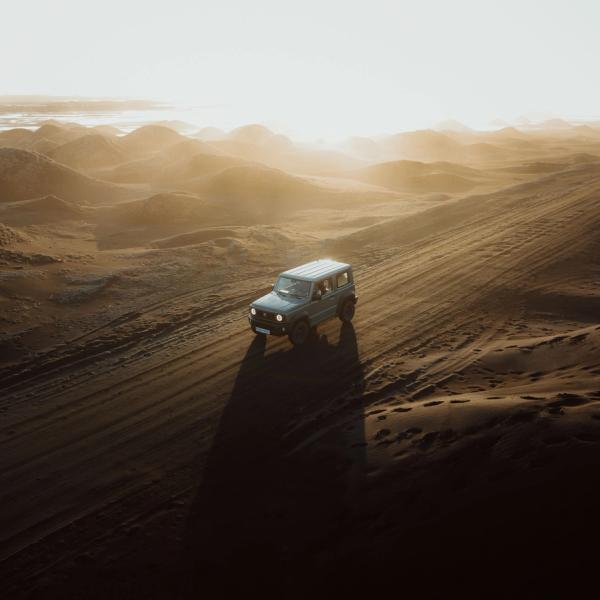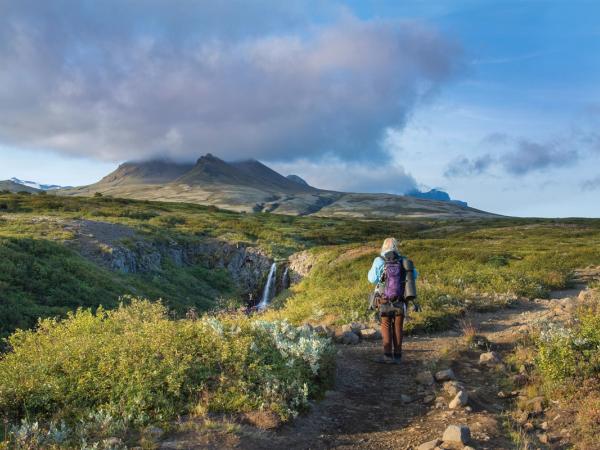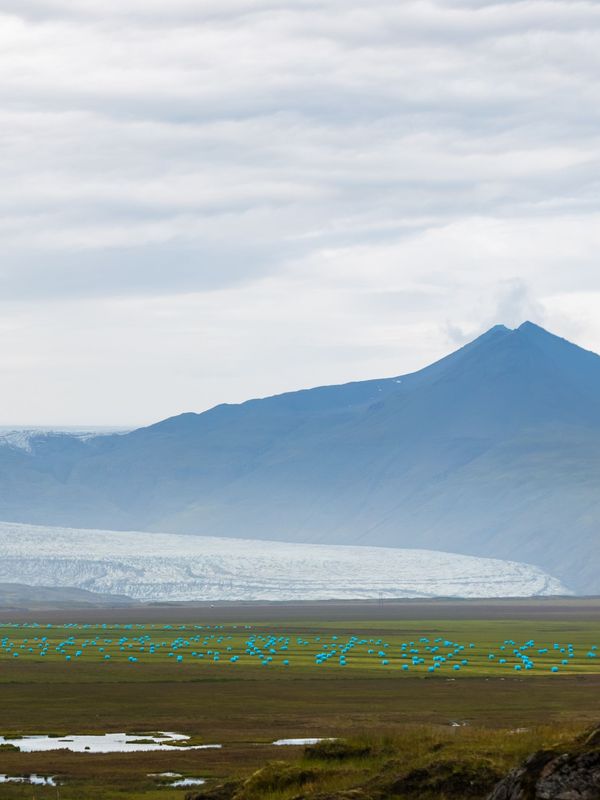
As pure and raw as Iceland can be: Skaftafell Nature Reserve
There are countries in the world that attract visitors from all over the world because of their natural beauty. Some of those places are unique in their own way, but not many have the variety of landscapes and ecosystems that Iceland does. Here, glaciers meet volcanoes, mountains get almost to the sea shores, where black sand beaches add a touch of color. Within the country, certain areas host a diverse range of experiences, encapsulating the best this Nordic country has to offer.
In South Iceland, there’s a nature reserve that perfectly represents what visiting this island is about. Welcome to Skaftafell, an area that will leave you speechless.
Key Takeaways
- Skaftafell is a natural park located in South Iceland.
- It’s part of the Vatnajökull National Park.
- The nature reserve has a wide variety of landscapes and wildlife.
What’s Skaftafell Nature Reserve?
Skaftafell is like reducing Iceland to a smaller, more compact territory. It has a bit of the magnificent things that can be found here: glaciers, forests, and volcanic drama packed into 4,800 square kilometers (1,853 square miles). Which is still quite a big area, but manageable. Back in the day, Skaftafell was one of the national parks in Iceland, but in 2008, it officially became part of the Vatnajökull National Park and was renamed as a nature reserve. Vatnajökull is the largest national park in Europe, and home to the continent’s biggest glacier, and occupies 14% of all Iceland’s landmass.
Although it’s no longer (officially) a national park, it sure feels like one. It’s a place where nature shows all its glory. You’ve got glacier tongues like Skaftafellsjökull going down valleys, black sand plains of volcanic origin stretching as far as the eye can see, and birch forests, something that is not very common in Iceland. The reserve has a huge network of trails that allows visitors to discover every part of this amazing area. There are options for all levels, from easy walks to challenging treks.
Skaftafell has been created by several natural forces. Glaciers, as we have mentioned, but also volcanoes and rivers. The visitors center provides exhaustive information about the geology and biodiversity of the reserve, its formation, and activities that can be done there. It also sheds light on the Viking roots and historical sites inside Skaftafell.
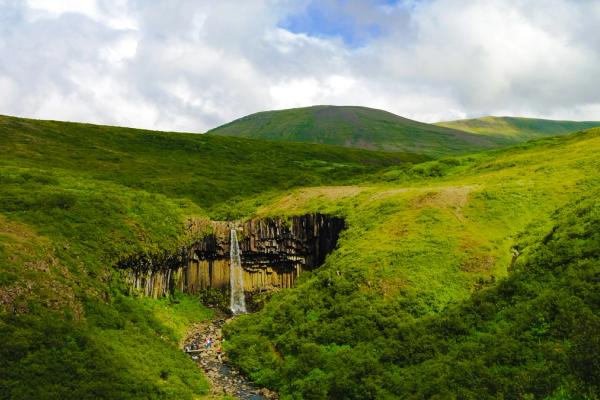
Why Is Skaftafell Nature Reserve Worth a Visit?
Skaftafell’s magic lies in its ability to feel both wild and welcoming. It’s a rare spot where you can stand on a glacier one moment and wander through a forest the next, all while enjoying views that belong in a fantasy novel. There are many ways to enjoy the reserve, and here are some of the highlights.
Svartifoss
Its name means “black waterfall” in Icelandic, and it’s one of the most famous and iconic waterfalls in the country. It’s not one of the tallest, but it’s really beautiful. Svartifoss is a 20-meter (65 feet) cascade that drops into a pool, surrounded by hexagonal basalt columns that look like they were carved by giants. This beautiful place served as inspiration for the design of the famous Hallgrímskirkja Church in Reykjavík. There’s a trail from the visitors’ center that gets you to the waterfall. On your way, you’ll pass by a birch forest and vistas of glaciers, making the journey as stunning as the destination.

Skaftafellsjökull Glacier
Although the huge Vatnajökull, looming on the horizon, is an impressive sight, there’s a glacier tongue within the reserve’s limits. It’s a smaller tongue that belongs to the immense Vatnajökull. This glacier tongue is a short, easy walk from the visitor center, perfect for those who want to see ice up close without a full trek.
The trail to Skaftafellsjökull winds through a valley, ending at a viewpoint where the glacier’s surface, cracked and of a light blue color, stretches before you. There are guided glacier hikes that take you to the glacier itself, where you’ll strap on crampons and explore crevasses and ice ridges. But you can also enjoy it from a distance. Even from the shore, the glacier’s scale is humbling.
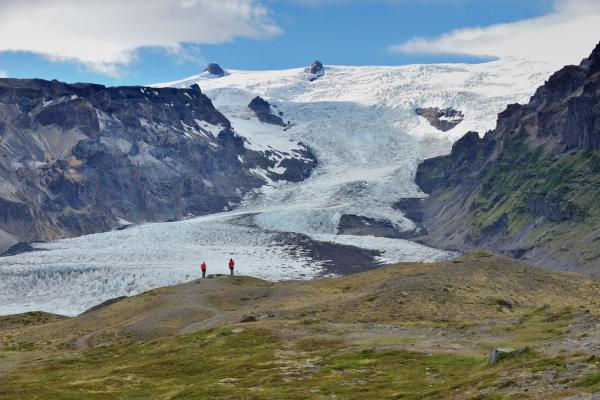
Kristínartindar Peak
For experienced hikers, the trek to Kristínartindar is a must. This challenging 6–8-hour round-trip climb rewards you with jaw-dropping views of Vatnajökull’s glacier tongues, tall mountains, and volcanic plains. The trail starts near Svartifoss, winding through meadows before climbing to the 1,126-meter (3,694-foot) summit. On clear days, you can see as far as the Atlantic Ocean.
The effort is worth it for the feeling one gets at the top, but it is not a casual adventure.

Wildlife and Flora
Skaftafell’s ecosystem is a quiet wonder. Arctic foxes, the only land mammal native to Iceland, can be seen here with their fluffy tails. Iceland, in general, and Skaftafell in particular, is a prime location for birdwatching. Many species can be spotted here, such as Arctic terns, skuas, and, occasionally, gyrfalcons. In the coastal areas, there are chances to see puffins.
As we have already mentioned, there are some forests inside Skaftafell, especially birch, and many patches of moss in many zones of the reserve. They create a beautiful contrast with the dark volcanic terrains, like stepping into a painting.
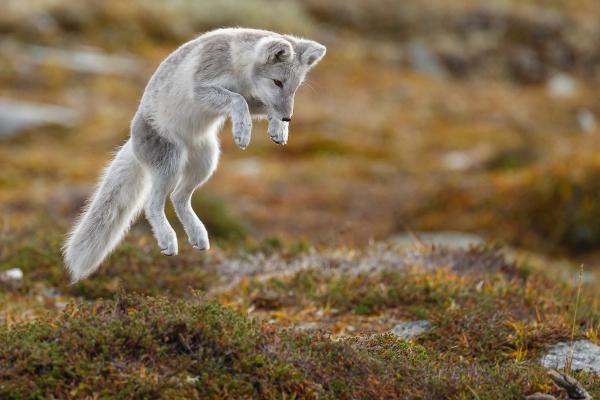
Glacier Adventures
Beyond hiking, Skaftafell offers other exciting activities, such as ice climbing and ice cave tours (available only in winter). There are private tour operators that offer glacier hikes. You’ll go with an expert guide who will provide all the necessary equipment and also interesting insights. You don’t need previous experience.
In this part of the country, you can also visit ice caves, which are carved by meltwater in the warmer months. Then, it freezes up again, creating new structures every winter.

Cultural Touches
The visitor center is not only the gate to the reserve, but also a fascinating source of information. There are exhibits about Skaftafell’s volcanic past and the early settlers who were brave enough to tame this wild area. You’ll learn about the region’s role in Viking sagas and how locals adapted to floods and eruptions. There are also mystical stories tied to Skaftafell. Legends that talk about elves and hidden people who inhabit the region.
Skaftafell’s blend of accessible trails, epic adventures, and natural beauty makes it one of the best places to visit in Iceland.
Where’s Skaftafell Nature Reserve and How to Get There?
As we have already mentioned, Skaftafell Nature Reserve is in South Iceland, just by the Vatnajökull glacier. It’s located about 327 kilometers (203 miles) from Reykjavik, and the entrance to the reserve is just off the famous Ring Road (Route 1), the main road in Iceland.
The best way to get there is by car. If you rent a vehicle, you’ll have the freedom to go there at your own pace, stopping if you want along the way, because there’s a lot to see in South Iceland.
If you’re coming from the capital, start by taking Route 1 eastbound. About 200 kilometers (124 miles) in, you’ll reach Vík, an excellent spot for a coffee or to stretch your legs at Reynisfjara Beach. From Vík, it’s another 127 kilometers (79 miles) to Skaftafell. The drive takes around 4.5 hours without stops, but plan for 5-6 with breaks.
The Ring Road is well-maintained, and it’s very easy to drive on it, but check the conditions before departing to make sure there are no setbacks.
The visitor center, your gateway to Skaftafell’s trails, is just off Route 1, with clear signs guiding you in. There’s a parking area for cars and campervans, and most trails, like those for Svartifoss and Skaftafellsjökull, are a quick 5–10-minute walk from the lot.
The Weather at Skaftafell Nature Reserve
The weather in Iceland is unpredictable and changes constantly. And that’s no different in Skaftafell. However, each season comes with its own peculiarities. Here’s what you can expect in each one of them:
Spring (April and May)
Spring in Skaftafell is a time of transition, with temperatures ranging from 0°C to 7°C (32°F to 45°F). There’s still snow from winter in the areas of higher elevation, but the valleys and fields start to wake up, and flowers bloom. Rain is frequent, often mixed with sleet, so waterproof gear is a must. The days grow longer week after week, getting as much as 16 hours of daylight by the end of May, so you’ll have plenty of time to explore every corner of the reserve. The trails can be muddy or icy, so check conditions at the visitor center.
Summer (June to August)
This is the best time of year for the weather in Skaftafell. The average temperature moves between 8°C and 15°C (46°F to 59°F). By the end of June, there are almost 24 hours of natural light, letting you hike late into the evening. Expect a mix of sunny days and sudden showers, with occasional fog rolling in from the coast. The trails are in their best condition. It’s also prime time for glacier hikes. Although the conditions are mostly favorable, temperature can drop suddenly or rain can come out of nowhere, so bring a waterproof jacket and dress in layers.
Autumn (September and October)
Autumn arrives with lower temperatures, typically ranging from 2°C to 10°C (36°F to 50°F). The conditions are not too different from those of spring, but they are moving in the opposite direction. The days get shorter, and daylight shrinks to 6 to 8 hours by the end of the season, so start hikes early. The colors of the forests change throughout the seasons, with hues of yellow, orange, and gold. The first snowfall can occur as early as mid-October, and the paths are often muddy and slippery. On the other hand, it’s a season with fewer tourists.
Winter (November to March)
In Skaftafell, winters are long and cold, and quite dark. There’s almost no daylight, with barely 4 hours by the last week of December. The snow covers almost every part of the reserve, and the average temperature moves between -5°C and 5°C (23°F to 41°F). Blizzards and strong winds can close paths and roads leading to Skaftafell Nature Reserve, so check before traveling. On the other hand, this is the time to visit the ice caves, and it’s the season when the Northern Lights appear more often.
What to Wear at Skaftafell Nature Reserve
- Waterproof Jacket and Pants: Rain can strike at any time, so pack waterproof clothing to protect against the elements.
- Layered Clothing: As the weather shifts so much, the best way to adapt to these changes is to wear layers. This way, you can add or remove items to stay comfortable, even in summer. A moisture-wicking base layer (thermal in the colder months); fleece or wool as an intermediate layer, and the aforementioned waterproof jacket on top.
- Hiking Boots: Waterproof boots with solid grip are non-negotiable to walk on the trails.
- Hat and Gloves: A warm hat and gloves help to maintain the body heat in the colder months. In summer, the wind can bite, so they’re always a good idea.
- Sunglasses and sunscreen: Glare off glaciers is intense, so sunglasses and sunscreen come in handy.
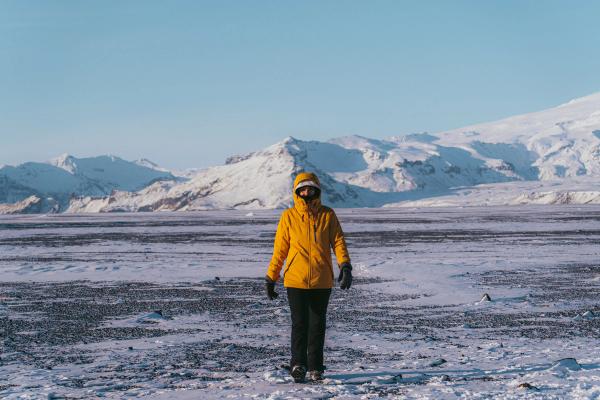
What to See and Do Near Skaftafell
By itself, Skaftafell is a fascinating destination if you’re coming to Iceland. But, luckily, the region it’s in is packed with marvels, so you can make the most out of your trip if you combine it with some of the following locations.
Jökulsárlón Glacier Lagoon
Not far from Skaftafell Nature Reserve, we can find Jökulsárlón Glacier Lagoon, one of the most stunning places in South Iceland. This lagoon is fed by one of the tongues of the Vatnajökull glacier, and there are big pieces of ice floating on the water. Many of these little icebergs are of an intense blue color. There are boat tours available that let you see them from up close, as well as seals swimming nearby.
Many chunks of ice float on the waters of the lagoon before drifting out to the sea and end up in Diamond Beach, where they shine and create a beautiful contrast with the black sand.

Fjallsárlón Glacier Lagoon
Less crowded than Jökulsárlón, this smaller lagoon offers a quieter experience to see the Fjallsjökull glacier’s icebergs. A short walk from the parking lot brings you to the shore. From there, you can see the icebergs drift in calm waters, with the glacier in the back.
It’s a fantastic place for photography and a nice walk, as there’s a gravel path that goes around the lagoon. It’s just 40 minutes from Skaftafell, so it’s a perfect quick stop.

Eldhraun Lava Field
This massive lava field, born from the Laki eruptions that took place between 1783 and 1784, is one of the largest of the world of its kind. It’s a surreal sea of moss-covered rocks just by the Ring Road. The vibrant green moss contrasts with the dark lava, creating a scene that seems out of a science fiction movie, perfect for photos. There’s a network of trails that allow visitors to walk around the field, but be careful, as stepping on the moss is forbidden, and the damage done could take decades to recover.
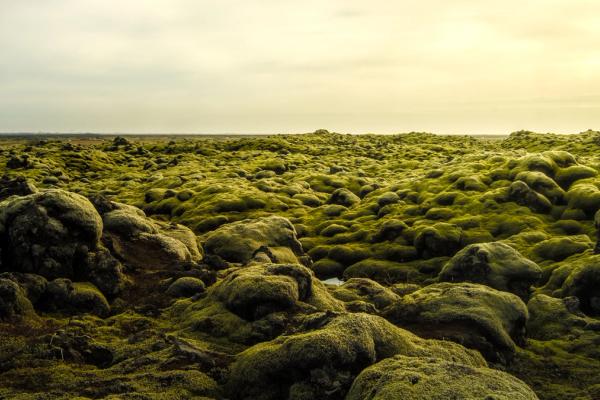
Fjaðrárgljúfur Canyon
This place is as beautiful as it is surreal. It’s a 2-kilometer (1.2 miles) canyon with steep cliffs up to 100 meters (328 feet) high. The cliffs are covered in a mushy green moss, and there’s a river at the bottom. There’s a trail that goes close to the edge of the cliffs, with benches along the way to take a break and enjoy the views. The trail is easy, though it can get slippery after rain.
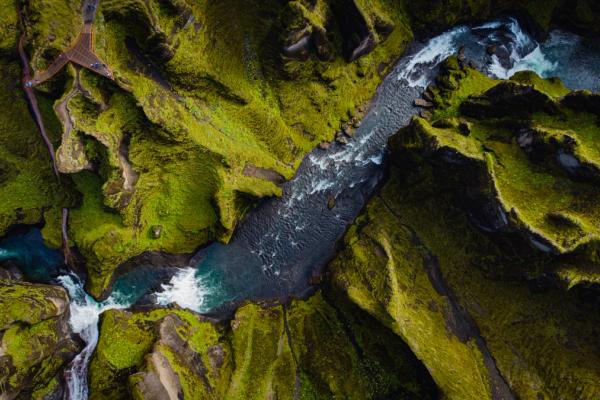
Katla Geopark
Spanning Iceland’s south coast, Katla Geopark is a geological wonderland of volcanoes, glaciers, and cultural gems. Named for the mighty Katla volcano, it has lava fields, waterfalls, and cliffs. Guided tours are available that delve into the region’s past and Viking history. It’s a bit further away from Skaftafell Nature Reserve, but can be added as a stop in your itinerary through the south of the country.
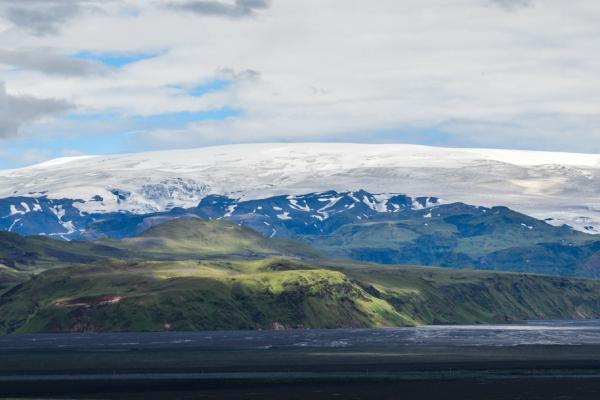
Where to Stay Near Skaftafell Nature Reserve
- Skaftafell Campground: Located within the reserve, this campground offers tent and campervan pitches, complete with hot showers, toilets, and a shared kitchen. It’s budget-friendly and perfect for staying inside the reserve.
- Hotel Skaftafell: Just 2 kilometers (1.2 miles) from the visitor center, this modern hotel offers cozy rooms, a tasty restaurant, and views of the glacier. It’s ideal for travelers looking for comfort after a day of hiking.
- The Potato Storage: This guesthouse, with a peculiar name, has eco-friendly rooms built in an old warehouse. It has minimalist design and it’s an affordable choice for those traveling on a budget.
- Svinafell Campground: Located near Svínafellsjökull glacier, this campground offers basic amenities, including showers and a kitchen.
- Nónhamar Private Cottages: These charming cottages, 10 kilometers (6.2 miles) from Skaftafell, offer privacy, kitchenettes, and scenic views. Perfect for families or groups wanting a nice and comfy retreat.

Travel Tips
- Book Tours Early: Glacier hikes and ice cave tours sell out fast, especially in summer (winter for the ice caves). Reserve in advance to secure a spot.
- Check Trail Updates: Weather can make trails slippery or impassable. Stop by the visitor center for maps and current conditions.
- Bring Food and Water: There are no restaurants inside the reserve, so pack snacks and a water bottle for hikes.
- Respect nature: Stick to trails to protect Skaftafell’s fragile ecosystems, and take all trash with you.
- Chase the Aurora: If you’re coming in winter, check aurora updates if you want to see the Northern Lights.
Conclusion
Iceland is a country full of natural wonders, but not many areas pack so much as Skaftafell Nature Reserve. Here, you’ll find waterfalls, glaciers, forests, and wildlife that will create a full Icelandic adventure. You just need to plan your visit well, pack the right stuff, and get ready for a fantastic experience.

